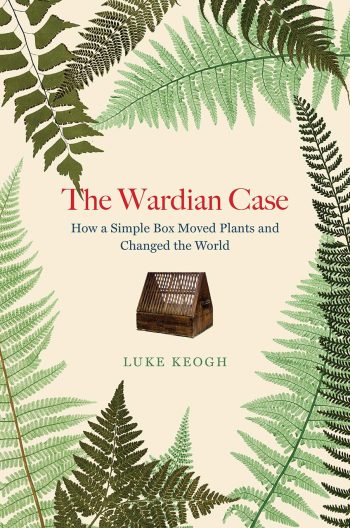 What is a Wardian Case? Any English gardener between 1850 and 1900 could have easily answered that question, but today it is mostly forgotten. Partly because the term was used for two distinct variations of the device. The first was a decorative, enclosed case – the forerunner to the terrarium – that allowed Victorian plant lovers to grow their ferns and orchids despite the heavily polluted air of London and other cities. The second was a tool for transporting plants on long sea voyages, and that form is the subject of “The Wardian Case: How a Simple Box Moved Plants and Changed the World” by Luke Keogh.
What is a Wardian Case? Any English gardener between 1850 and 1900 could have easily answered that question, but today it is mostly forgotten. Partly because the term was used for two distinct variations of the device. The first was a decorative, enclosed case – the forerunner to the terrarium – that allowed Victorian plant lovers to grow their ferns and orchids despite the heavily polluted air of London and other cities. The second was a tool for transporting plants on long sea voyages, and that form is the subject of “The Wardian Case: How a Simple Box Moved Plants and Changed the World” by Luke Keogh.
In part, this book is also a biography of Nathaniel Bradshaw Ward (1791-1868), a London physician who was a passionate, amateur botanist. His experiments with sealed environments led to the highly successful efforts in the 1830s to transport plants for the many months it took to travel from, for example, Sydney to London. Prior attempts had mostly failed because of damage from salt spray or a shortage of fresh water. This invention became so popular that by later in the 1800s “there were thousands if not tens of thousands of these cases in operation, moving plants around the globe. Our choices of what we drink, eat, smell, and wear have all been transformed by the movement of plants.”
This movement of plants had a profound impact on human cultures, especially those colonized by European powers. The Wardian Case allowed for the transport of many valuable crops to be grown in colony plantations with suitable climates, typically destroying the native flora and often subjugating the local population to work these foreign crops. Examples include tea, rubber, cocoa, and cinchona, the source of quinine used to fight malaria.
These plants did not travel alone. In their soil and on their leaves came various animal species and plant diseases eager to attack a susceptible flora. Many of the plants themselves became invasive. All this led to efforts in the 20th century to using these cases (now better known as cages) to send predatory insects to attack unwanted plants and destructive pests. The advance of air travel ended the prominence of the Wardian Case but for about a century it was closely linked to all aspects of the global movement of plants for profit, research, and horticulture.
Winner of the 2021 Award of Excellence in History from the Council on Botanical and Horticultural Libraries
Excerpted from the Summer 2021 issue of the Arboretum Bulletin